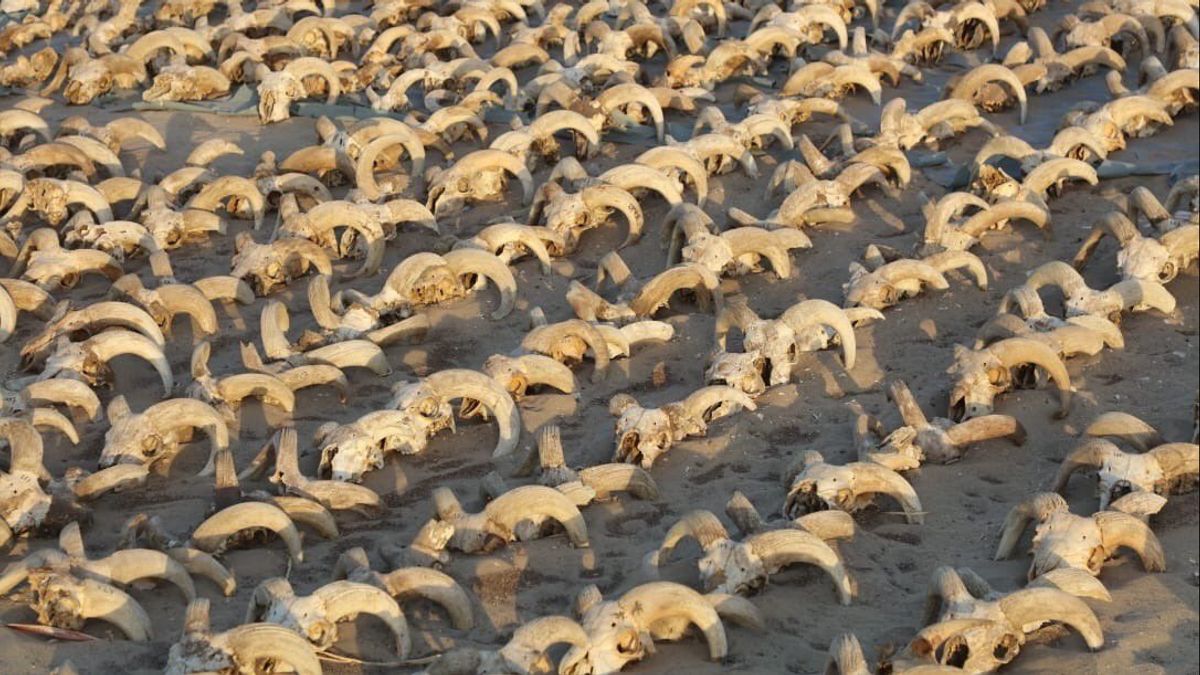JAKARTA - An American archaeological mission has found the remains of more than 2,000 male sheep head mummies in a prominent temple in southern Egypt.
Mission from the Institute for the Study of the Ancient World at New York University also found a building nearly 4,000 years old during the reign of the sixth ancient Egyptian dynasty (2345-2181 BC).
The discovery was carried out on the land of the temple ofvisis II in the ancient city of Abydos, in Sohag Province, Egypt Hulu.
This temple is one of several temples across the country dedicated tovises II, whose government from 1279 BC to 1213 BC is considered by many to be the pinnacle of Egyptian power and glory.
Mostafa Waziri, secretary general of the Egyptian Antiquities Council who carried out and supervised archaeological excavations, said the discovery was quite important as they "covered important details about the life and history of the temple ofvises II in Abydos and its surroundings."
"These findings make a major contribution to our understanding of temples and all the life they witnessed for more than 2,000 years from the sixth dynasty to Egypt
The American archaeological mission of New York University, working in the area of the temple of King Rameses II in Abydos, uncovered more than 2,000 mummified #rams' heads from the Ptolemaic era, in addition to a huge building from the Sixth Dynasty.#Egypt #discovery pic.twitter.com/H3pxy3pjbq
— Ministry of Tourism and Antiquities (@TourismandAntiq) March 26, 2023
The buildings discovered by the mission preceded the reign ofvises II by about 1,000 years until the last epoch of the Old Kingdom of Egypt, and were architecturally very different from the temple structure, with very thick walls with a depth of about five meters.
This is expected to explain the architectural traditions of the Old Kingdom, which was the least understood ancient Egyptian era.
To note, the Giza Pyramids are among the remaining handful of relics of the Old Empire.
The male ram's head, which originated in the situation period from 305 BC - 30 BC, was found in a newly discovered storage space in the northern part of the temple, along with the remains of other mummy animals, including sheep, which were distinguished from karean sheep having no horns, dogs, wild goats, cows, deer and civets.
The bull's head is believed to be placed there as a nazar offering to gods, common practice in ancient Egypt, according to Dr. Sameh Iskandar, America's head of mission. He said using sheep in a ritual of relative worship was never heard of during thetipic period.
He argues that the heads can be used as a tribute tovises II, which suggests that the legendary month is still being echoed, even 1,000 years after his death.
Meanwhile, fragments of statues,men and remains of ancient trees were also discovered by a mission, which will continue excavations at the temple in the coming months.
The English, Chinese, Japanese, Arabic, and French versions are automatically generated by the AI. So there may still be inaccuracies in translating, please always see Indonesian as our main language. (system supported by DigitalSiber.id)













